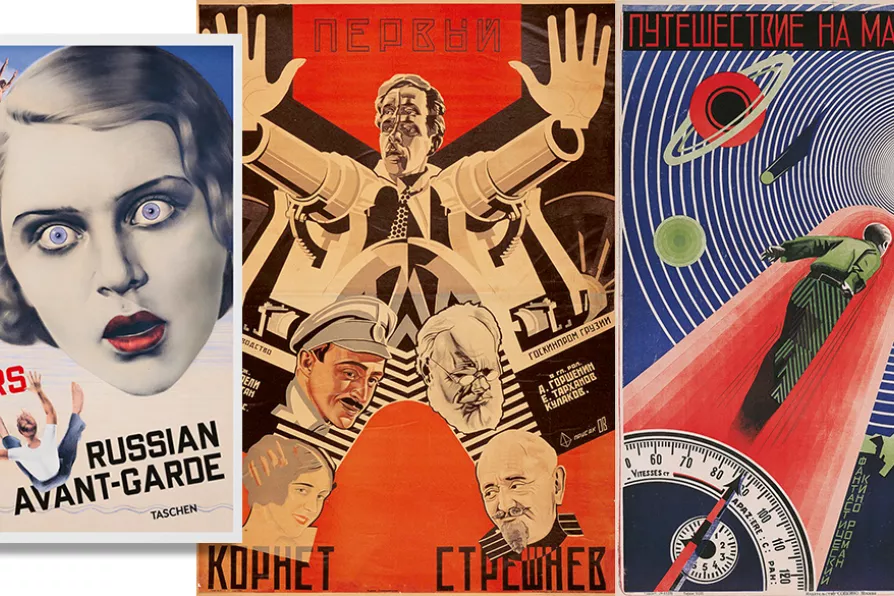RICHARD MURGATROYD enjoys a readable account of the life and meditations of one of the few Roman emperors with a good reputation

 (L to R) Mikhail Dlugach, film poster for Yego Kariera/His Career, 1928; Anton Lavinsky, film poster for Miss Mend, 1927; Nikolai Prusakov, film poster for Pyat Minut/Five Minutes, 1929
(L to R) Mikhail Dlugach, film poster for Yego Kariera/His Career, 1928; Anton Lavinsky, film poster for Miss Mend, 1927; Nikolai Prusakov, film poster for Pyat Minut/Five Minutes, 1929
Film posters of the Russian avant-garde
by Susan Pack
Taschen £34.15
FILM posters are among the most memorable graphic images generated during the first decade of the Soviet revolution.
Lenin, who believed “that of all the arts the most important for us is the cinema,” nationalised the film industry on August 27 1919 and in the same year the world’s first state-filmmaking school, the First State School of Cinematography, was established in Moscow.
The Soviet slogan “Art into life” encouraged artists to assume social responsibility in their work be it furniture design, fashion, architecture, photography, theatre stage design or the modernised film industry.

MARIA DUARTE and MICHAL BONCZA review Mission: Impossible - The Final Reckoning, Bob Trevino Likes It, Lilo & Stitch, Fountain of Youth

Reviews of A New Kind Of Wilderness, The Marching Band, Good One and Magic Farm by MARIA DUARTE, ANDY HEDGECOCK and MICHAL BONCZA

Borrowed Time: Lennon’s Last Decade, Parthenope, Where Dragons Live and Thunderbolts* reviewed by MICHAL BONCZA and MARIA DUARTE

Badenoch under pressure to sack shadow justice secretary










